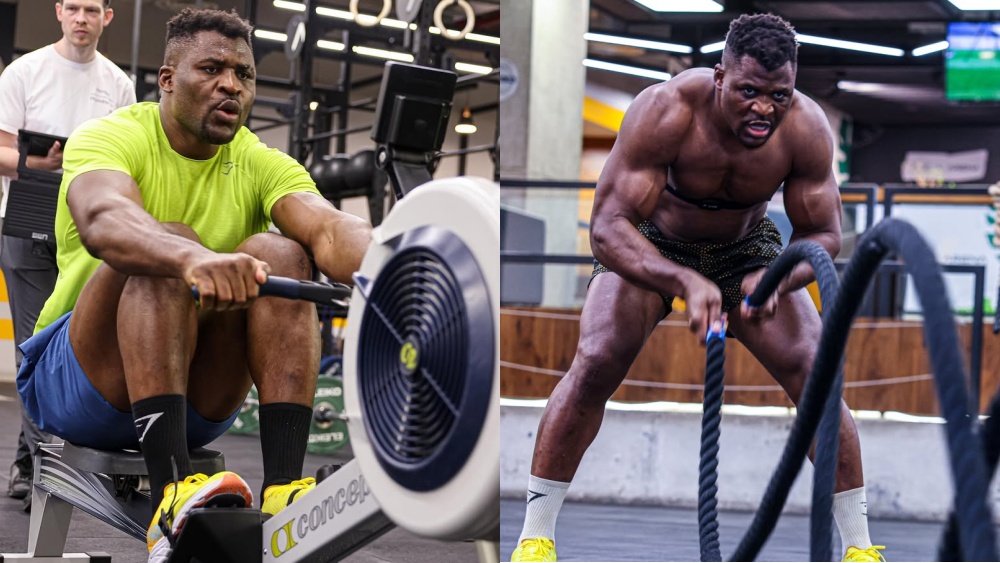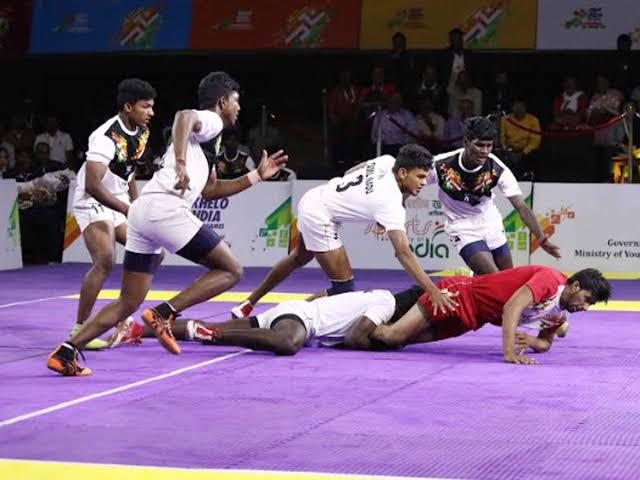
Running has historically been a considerable portion of many martial arts fighters’ training regimens, but it’s not the only way to get your heart pumping and build up your cardiovascular endurance. Many non-traditional workouts challenge your body in ways running doesn’t, making them excellent for fighters looking to break free from running endless miles on the road.
This article will discuss effective alternatives fighters can use to push their cardiovascular endurance to its limits. Exercises like rowing, climbing, HIIT, and obstacle courses can complement your Muay Thai, Boxing, BJJ, or Wrestling training.
Four Non-Traditional Cardio Exercises For Fighters
Let’s jump into our list of unconventional cardiovascular exercises that will significantly improve your endurance:
1) Rowing
Rowing isn’t just for preppy Ivy League teams. It’s a full-body exercise that burns as much as 600 calories per hour while strengthening your legs, core, arms, and back. It’s also a low-impact exercise that’s gentler on your joints than running several miles weekly.
Studies show that rowing improves VO2 max (aerobic capacity) as effectively as running, so feel free to swap in a few of your running sessions.
Some of the key benefits rowing offers fighters include the following:
- Full-Body Engagement: Every stroke on a rowing machine or a canoe engages multiple muscle groups simultaneously, improving your coordination.
- Low Joint Impact: Rowing doesn’t put as much stress on your knees, ankles, and feet as running does.
- Excellent For Circuits: Adding rows to high-intensity interval training (HIIT) sessions is easy.
The rhythmic pace of rowing almost feels meditative as you push yourself to your limits during long workouts.
2) Climbing
Climbing might be what you need if you’re looking for a more challenging workout than running a few miles. It doesn’t matter if you’re scaling an indoor climbing wall or scaling boulders outdoors; climbing strengthens your grip, balance, and core stability.
Climbing engages muscles that stay relaxed while running and pushes your cardiovascular endurance.
Some of the reasons why climbing and fighters go together like bread and butter include the following:
- Upper-Body Strength: Climbing forces you to pull yourself up the obstacle, engaging your grip, back, core, and biceps.
- Improves Mental Focus: Climbing requires strategic planning and problem-solving skills as you map out your way to the top. These skills translate to fighting, where you must overcome your opponent’s strengths and find paths to victory.
- Core Stability: Your core muscles are constantly engaged while climbing, improving your balance and ability to control your body.
- Lower-Leg Strength: Climbing also works many muscles in your lower body as you push with your legs while pulling with your arms.
3) High-Intensity Interval Training (HIIT)
HIIT has been a significant part of many fight camps in the past few decades, as research shows it’s a more effective way to improve your cardiovascular endurance than steady-state exercises like running.
It gets even better: HIIT circuits are customizable, so fighters can work on their muscle endurance while building their cardio. Any exercise that can be performed at a high intensity can be part of a HIIT circuit, allowing fighters to build circuits with fight-specific exercises like heavy bag drills, pad work, jump rope, Turkish getups, and weight training.
Other reasons why HIIT is excellent for fighters include the following:
- Increased Fat Burn: Alternating between intense activities and brief rest periods burns more calories than running. An hour spent performing a HIIT workout burns as much as 1,000 calories, while an hour running only burns around 400. This difference is enormous for fighters looking to cut weight.
- Increased Coordination: High-intensity interval training requires quickly switching between exercises. Teaching different muscle groups to work together.
HIIT can be anything you want it to be. You can be bobbing and weaving one minute and firing off rapid punches at a heavy bag the next. You can turn your training sessions into mini-fights against yourself.
4) Obstacle Courses
Obstacle courses give you a multifaceted cardiovascular workout that pushes you to adapt and overcome. These courses mix running with climbing, crawling, and jumping, engaging different muscle groups.
The unpredictable nature of obstacle courses mimics the uncertainty of a fight, so you should constantly search for new courses to conquer.
Some of the reasons to consider making obstacle courses a part of your training include the following:
- Provides Agility Boost: Rapid transitions between different obstacles as quickly as possible improve your coordination.
- Improves Muscle And Cardiovascular Endurance: The varied movements required to get through an obstacle course engage your aerobic and anaerobic systems.
- Builds Resilience: Getting through an obstacle course helps to build mental toughness. Many courses, particularly military-style ones, are designed to break you mentally.
Mixing It Up: Tailor Your Cardio Routine
Sticking to one type of cardiovascular exercise often leads to boredom, plateaus, and some muscles getting neglected. Variety is key to continuous improvement as a fighter. Add unconventional exercises to your routine instead of lacing up your running shoes whenever it’s cardio day.
Variety protects against training overuse injuries and keeps your body constantly adapting to what you’re doing.
Tips for integrating non-traditional cardio:
Some of the creative ways to add more unconventional exercises to your workouts include:
- Rotate Workouts: Schedule activities like rowing, climbing, HIIT boxing, and obstacle courses throughout the week. Try to avoid performing any exercise on consecutive training days.
- Add Non-Traditional Exercises To Conventional Workouts: Add a 20-minute rowing session to your weight training workout. You can even use it as a warm-up before heavy lifting.
- Listen To Your Body: Vary your intensity when performing unconventional exercises to avoid burnout. Intense training sessions should be balanced with active recovery days.
Variety Is Key For Developing Top-Level Cardio
Shaking up your cardiovascular routine with some non-traditional exercises doesn’t mean you have to stop running completely—unless you want to. Instead, look at them as a powerful way to complement what you’re already doing.
Experiment with different workouts, adjust your intensity levels regularly and always use proper form. Unconventional exercises push your body in many different ways running doesn’t, taking your cardio farther than running alone ever could.
You may also like:
A Beginner’s Guide To High-Intensity Training
High-intensity training is one of the best and most effective ways to reach your fitness goals, whether for general health or conditioning as a martial artist. It helps push your mind and body to the…
Juggling work obligations, family responsibilities, and martial arts training can be challenging. Micro workouts are one of the ways people with busy schedules keep their bodies in excellent shape without spending hours at the gym….
Figuring out if your workouts should consist mainly of hypertrophy or strength exercises comes down to your fitness goals. Are you there to get bigger or stronger? Hypertrophy training is what you need to build…
A solid core serves as the foundation that enables martial artists to execute various techniques in these ancient styles. Your core is the group of muscles in your hips and midsection that surround your spine,…
When working out to your max, you will most likely experience muscle tension. It is a rite of passage for anyone who loves pushing their bodies to the limit. We’ve all been there before; you…
When working out, compound exercises and movements should be your main focus if you want to increase your muscle mass and strength. A compound exercise is a movement that forces you to engage multiple muscle…
One Muay Thai Flyweight superstar, Rodtang Jitmuangnon, is set to face Japan’s kickboxing superstar, Takeru Segawa, in a Flyweight Kickboxing super-fight on March 23 at ONE 172 in Japan’s Saitama Super Arena. They are among…
The back is the most dominant position in grappling sports such as Brazilian Jiu-Jitsu, Submission Grappling, and Mixed Martial Arts, both in the stand-up and on the ground (back mount). In the stand-up, it allows…
Becoming a great fighter in martial arts requires more than strength, speed, or endurance—you must also be smart. While most martial artists typically aren’t viewed as the most cerebral members of society, there are clear…
So, your child wants to learn how to throw flying spinning kicks like one of the superheroes they see on TV? Welcome to the world of being a martial arts parent—a place where excitement is encouraged,…
Take a look at any martial arts competition, and it’s easy to understand why so many people believe the misconception that martial arts are the domain of athletic people. People notice that most martial artists…
Oleksandr Usyk is considered one of the greatest boxers today. Still undefeated, Oleksandr has recently defeated boxing heavyweight giants like Anthony Joshua (twice), Daniel Dubois, and Tyson Fury (twice). While he’s still relatively new to…
































